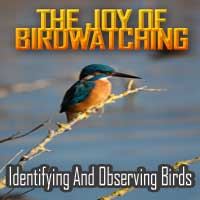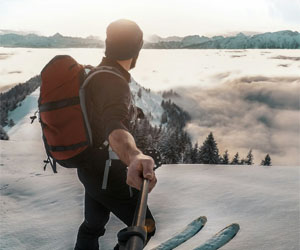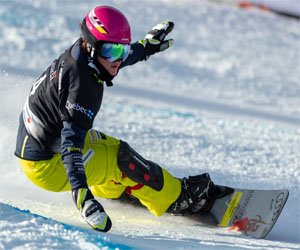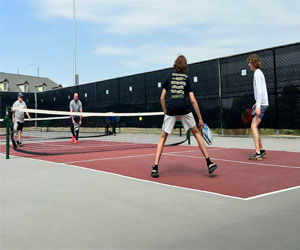


Essential Tips For A Safe Fitness Journey

Embarking on a fitness journey is a commendable endeavor that promises numerous physical and mental benefits. However, to reap the rewards of your newfound commitment, safety should be a top priority. Whether you are new to fitness or a seasoned enthusiast, adhering to safety guidelines is essential. In this article, we'll explore safety tips that everyone on a fitness journey should follow to ensure a safe and enjoyable experience.
1. Consult A Healthcare Professional: Before diving into a fitness routine, especially if you have underlying medical conditions, it's crucial to consult with a healthcare professional. They can provide personalized advice and identify any potential risks associated with your chosen activities.
2. Start Slowly: Beginning your fitness journey at a moderate pace is key to injury prevention. Starting slowly allows your body to adapt to new demands and minimizes the risk of overexertion.
3. Set Realistic Goals: Set achievable fitness goals that are specific and measurable. Unrealistic expectations can lead to frustration and potential injuries. Gradual progress is more sustainable and less risky.
4. Warm-Up And Cool-Down: Every workout should begin with a proper warm-up and end with a cool-down. Warming up prepares your body for exercise by increasing blood flow and flexibility, while cooling down helps to gradually lower your heart rate and prevent muscle soreness.
5. Technique And Form: Proper technique and form are essential to reduce the risk of injuries. Consider working with a fitness coach or personal trainer who can provide guidance and correct your form during exercises.
6. Cross-Training: Diversify your workouts by incorporating cross-training activities. Engaging in different types of exercise can help reduce the risk of overuse injuries and balance muscle development.
7. Listen To Your Body: Your body provides signals, such as pain or discomfort, to alert you to potential issues. Ignoring these signals can lead to injuries. Pay attention and respond accordingly.
8. Stay Hydrated: Dehydration can compromise your physical performance and increase the risk of heat-related illnesses. Be sure to drink enough water before, during, and after your workouts.
9. Proper Nutrition: Fuel your body with the right nutrients to support your fitness goals. A balanced diet that includes a mix of macronutrients, vitamins, and minerals is crucial for performance and recovery.
10. Safety Equipment: Depending on your chosen activity, safety equipment may be necessary. This can include helmets, padding, proper footwear, and other protective gear. Always wear the appropriate safety equipment when required.
11. Rest And Recovery: Overtraining is a common pitfall that can lead to injuries and burnout. Allow your body to recover by scheduling rest days and getting sufficient sleep. This downtime is crucial for healing and growth.
12. Support System: Joining a fitness group, hiring a personal trainer, or working out with a friend can provide valuable support and motivation. Having someone to share your fitness journey with can help you stay accountable and make your workouts more enjoyable.
13. Injury Prevention Workshops: Participating in injury prevention workshops can provide insights into how to protect yourself during workouts. These workshops often cover safety measures, injury prevention techniques, and emergency responses.
14. Regular Check-Ups: Regular health check-ups can help identify any underlying health issues that may affect your fitness journey. Addressing these concerns early can prevent complications during your workouts.
Safety should be a fundamental consideration for anyone embarking on a fitness journey. By following these safety tips, you can minimize the risk of injuries, ensure a smooth and enjoyable experience, and achieve the physical and mental benefits of your fitness goals. Remember, a safe fitness journey is a sustainable one, leading to long-lasting health and well-being.


A Fascinating Journey Into Nature's Avian Realm
 The Appeal Of Birdwatching:
The Appeal Of Birdwatching:
Birdwatching's enduring popularity can be attributed to its multifaceted appeal:
A Connection With Nature: Birdwatching provides a direct and intimate connection with the natural world. It invites enthusiasts to step outdoors and immerse themselves in the sights and sounds of diverse ecosystems, from lush forests to coastal wetlands.
Discovery And Exploration: Each birdwatching outing is a journey of discovery. Every observation offers the chance to encounter new species, behaviors, and habitats, providing endless opportunities for exploration and learning.
A Sense Of Serenity: Birdwatching is a calming and meditative experience. It allows individuals to escape the hustle and bustle of daily life, fostering a sense of peace and tranquility.
Community And Camaraderie: Birdwatchers often form tight-knit communities, connecting with others who share their passion. Bird clubs, online forums, and group outings provide opportunities for shared experiences and the exchange of knowledge.
Scientific Contribution: Birdwatching isn't just a hobby; it's a valuable scientific pursuit. Enthusiasts contribute to citizen science projects, gathering data on bird populations, behaviors, and migrations that aid in ornithological research and conservation efforts.






Nurturing Nature While Exploring
 Sustainable Gear And Practices: Eco-conscious adventurers understand that the gear they choose can have a significant environmental impact. They opt for eco-friendly and sustainable equipment, such as recyclable and biodegradable materials. Additionally, they practice responsible resource management by conserving water, reducing energy consumption, and minimizing waste generation during their journeys.
Sustainable Gear And Practices: Eco-conscious adventurers understand that the gear they choose can have a significant environmental impact. They opt for eco-friendly and sustainable equipment, such as recyclable and biodegradable materials. Additionally, they practice responsible resource management by conserving water, reducing energy consumption, and minimizing waste generation during their journeys.
Low-Impact Camping: Camping is an integral part of wilderness journeys, and eco-conscious adventurers are known for their low-impact camping practices. This involves setting up camp in designated areas, using portable stoves for cooking instead of open fires, and following the "Leave No Trace" camping guidelines to ensure that the natural surroundings remain unspoiled.
Wildlife Observation And Conservation: Eco-conscious wilderness journeys often involve opportunities for wildlife observation. Rather than disrupting the animals they encounter, eco-conscious adventurers approach wildlife with respect and care. They maintain a safe distance and use binoculars or telephoto lenses to avoid causing distress to the animals.
Embrace The Snowy Slopes
 The Basics Of Skiing And Snowboarding: Before you hit the slopes, it's essential to understand the fundamental differences between skiing and snowboarding. Skiing involves using two separate skis on your feet, while snowboarding employs a single snowboard. Skiing is typically easier to learn for beginners as it allows for better balance, while snowboarding requires a bit more coordination but offers a unique sense of control and style.
The Basics Of Skiing And Snowboarding: Before you hit the slopes, it's essential to understand the fundamental differences between skiing and snowboarding. Skiing involves using two separate skis on your feet, while snowboarding employs a single snowboard. Skiing is typically easier to learn for beginners as it allows for better balance, while snowboarding requires a bit more coordination but offers a unique sense of control and style.
Choosing The Right Gear: Selecting the right equipment is crucial to your success on the slopes. Make sure to invest in well-fitted boots, skis or a snowboard, and appropriate clothing to keep you warm and dry. Rental equipment is a cost-effective option for beginners, allowing you to test the sport before committing to your own gear.
Lessons And Instruction: Enrolling in lessons with a certified instructor is a wise choice for beginners. Ski schools and snowboarding instructors can provide you with proper guidance, teach you the essential techniques, and ensure your safety. They will help you learn how to balance, turn, and stop effectively, reducing the risk of injuries.
The Perfect Wave-Riding Companion
 Funboards: Versatility And Maneuverability
Funboards: Versatility And Maneuverability
Features: Funboards, also known as mini-malibus, combine elements of both longboards and shortboards. They are typically between 7 and 8 feet long and provide a great balance of stability and maneuverability. Funboards are excellent for intermediate surfers looking to progress beyond longboarding and experiment with more dynamic moves.
Shortboards: High-Performance Precision
Features: Shortboards are the go-to choice for advanced surfers seeking precision and responsiveness. They are typically 5 to 7 feet long, characterized by a narrow, pointed nose, and a sharp, high-performance rocker. Shortboards are designed for quick, agile maneuvers and are often used in professional competitions. They are ideal for experienced surfers looking to push the boundaries of their performance.
Fish Boards: Speed And Agility
Features: Fish boards are recognizable by their distinctive swallowtail shape and are typically between 5'4" and 6'4" in length. These boards offer a great combination of stability and speed, making them ideal for surfers looking to capitalize on smaller, mushier waves. Fish boards are known for their fun and playful nature in the water.
Gun Boards: Conquering Big Waves
Features: Gun boards are specialized surfboards designed for riding larger, more powerful waves. They are typically longer and narrower, with a pointy nose and a prominent rocker to handle steep drops. Gun boards are reserved for experienced surfers and are a must for those seeking the thrill of conquering massive waves.
The Drive For Excellence
 Skill Development: Pickleball requires a unique set of skills that combine the finesse of table tennis, the agility of badminton, and the strategic elements of tennis. Competitive players dedicate significant time to developing these skills, including shot placement, spin control, and precision. The pursuit of mastery in these areas is a key driver of competitiveness.
Skill Development: Pickleball requires a unique set of skills that combine the finesse of table tennis, the agility of badminton, and the strategic elements of tennis. Competitive players dedicate significant time to developing these skills, including shot placement, spin control, and precision. The pursuit of mastery in these areas is a key driver of competitiveness.
Strategic Play: While pickleball is known for its social and recreational appeal, competitive players bring a new level of strategic thinking to the game. Each point is a mini-battle of wits, with players analyzing their opponents' weaknesses, anticipating shots, and creating opportunities for winning plays. Strategic innovations such as the third shot drop and stacking are embraced to gain a competitive edge.
Tournaments And Rankings: The competitive aspect of pickleball is exemplified by the numerous tournaments held worldwide, attracting players who aim to compete at the highest levels. These events include local, regional, national, and international competitions.